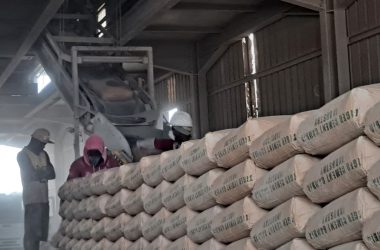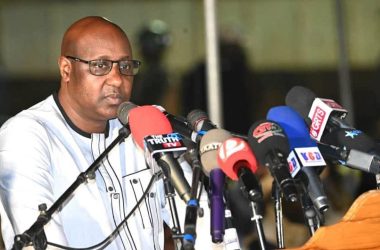 (JollofNews) – The Gambia is facing a bleak economic outlook and will struggle to pay for imports and service debts to foreign creditors, the governor of the Central Bank of the Gambia warns.
(JollofNews) – The Gambia is facing a bleak economic outlook and will struggle to pay for imports and service debts to foreign creditors, the governor of the Central Bank of the Gambia warns.
Amadou Colley said a decline in the country’s gross international reserves from US$160.3 million in October 2013 to US$132.6 million as at end-October 2014 will seriously hamstrung the Jammeh regime’s ability to repay creditors and will also leave the economy vulnerable to external shocks.
He added that the Gambia’s domestic growth outlook for 2014 remains weak due to the impact of delayed rainfall on agriculture and the adverse effect of the Ebola outbreak on the services sector, particularly tourism.
In his quarterly monetary policy report, the governor said provisional data on the Jammeh regime’s fiscal operations for the first nine months of 2014 indicates a deficit of D1.4 billion (3.7 per cent of GDP) compared to D1.3 billion (3.9 percent of GDP) in the corresponding period in 2013.
He added that due to the bleak economic outlook, the Gambia’s total revenue and grants for the year is estimated at D6.0 billion (16.2 per cent of GDP), below the target of D6.3 billion (16.5 per cent of GDP).
The governor said the country’s total expenditure and net lending has increased from D5.98 billion (18.3 per cent of GDP) in the first nine months of 2013 to D7.4 billion (19.8 per cent of GDP) during the period under review and higher than the projected D7.3 billion (19.5 percent of GDP). 
“Although both current and capital expenditures increased, current expenditure grew at a stronger pace of 52.2 per cent than capital expenditure (5.4 per cent),” the governor added.
“Of the components of current expenditure, wages, salaries and allowances, other charges and domestic interest payments increased by 46.7 per cent, 30.0 percent and 120.5 per cent respectively. External interest payments, in contrast, decreased by 52.5 percent.”
The governor revealed that current estimates on the country’s preliminary balance of payments for the first half of 2014 has indicated an overall deficit of US$2.15 million, lower than the deficit of US$5.6 million in the first half of 2013.
“The slight improvement in the overall balance was mainly due to the increase in the capital and financial account surplus,” he said.
“The current account deficit, on the other hand, widened to US$58.06 million from a deficit of US$38.25 million in the first half of 2013. Of the components of the current account, the merchandise trade deficit narrowed slightly to US$98.90 million, from US$100.20 million in the corresponding period of 2013. Both imports and exports increased by 17.0 per cent and 23.4 per cent to US$167.80 million and US$54.40 million respectively.”
The governor revealed that in the year to end-September 2014, the Gambia’s domestic debt has ballooned to D16.73 billion (45.4 percent of GDP) from D12.4 billion (38.0 per cent of GDP). He added that treasury bills and Sukuk Al Salaam bills which accounts for 81.0 per cent and 3.4 per cent of the debt stock, increased by 36.2 percent and 35.7 per cent respectively.
He added that the country’s consumer price inflation has increased to 6.3 per cent in September 2014, slightly higher than the 6.1 per cent in September 2013 and both food and non-food inflation have also accelerated to 7.34 per cent and 4.84 per cent from 7.31 per cent and 4.23 per cent in September 2013 respectively.
He added that core inflation, excluding prices of energy and volatile food items has also skyrocketed to 6.04 per cent in September 2014 compared to 5.94 per cent in September 2013 and headline inflation is forecast to exceed the end-December 2014 target of 5.0 per cent.





